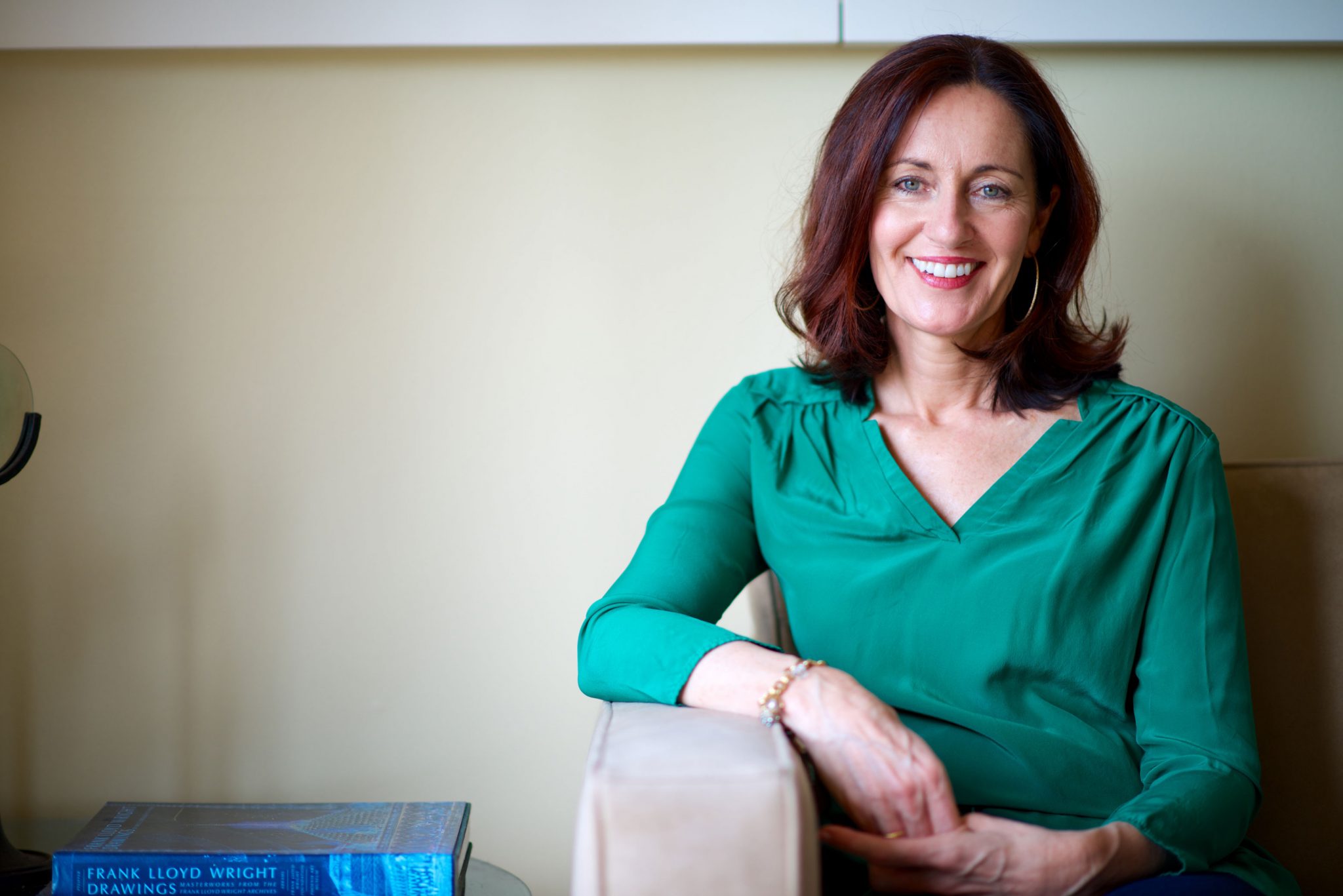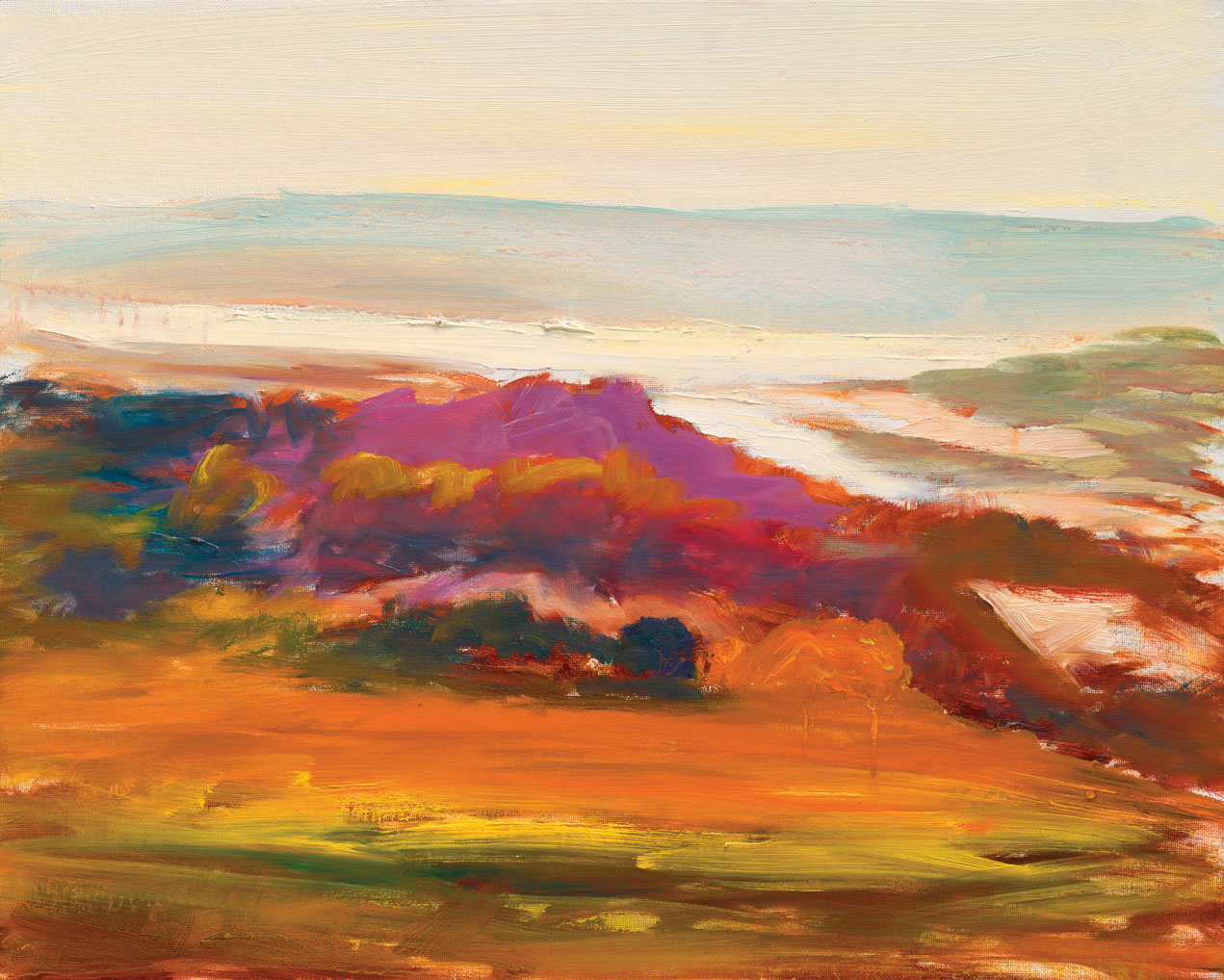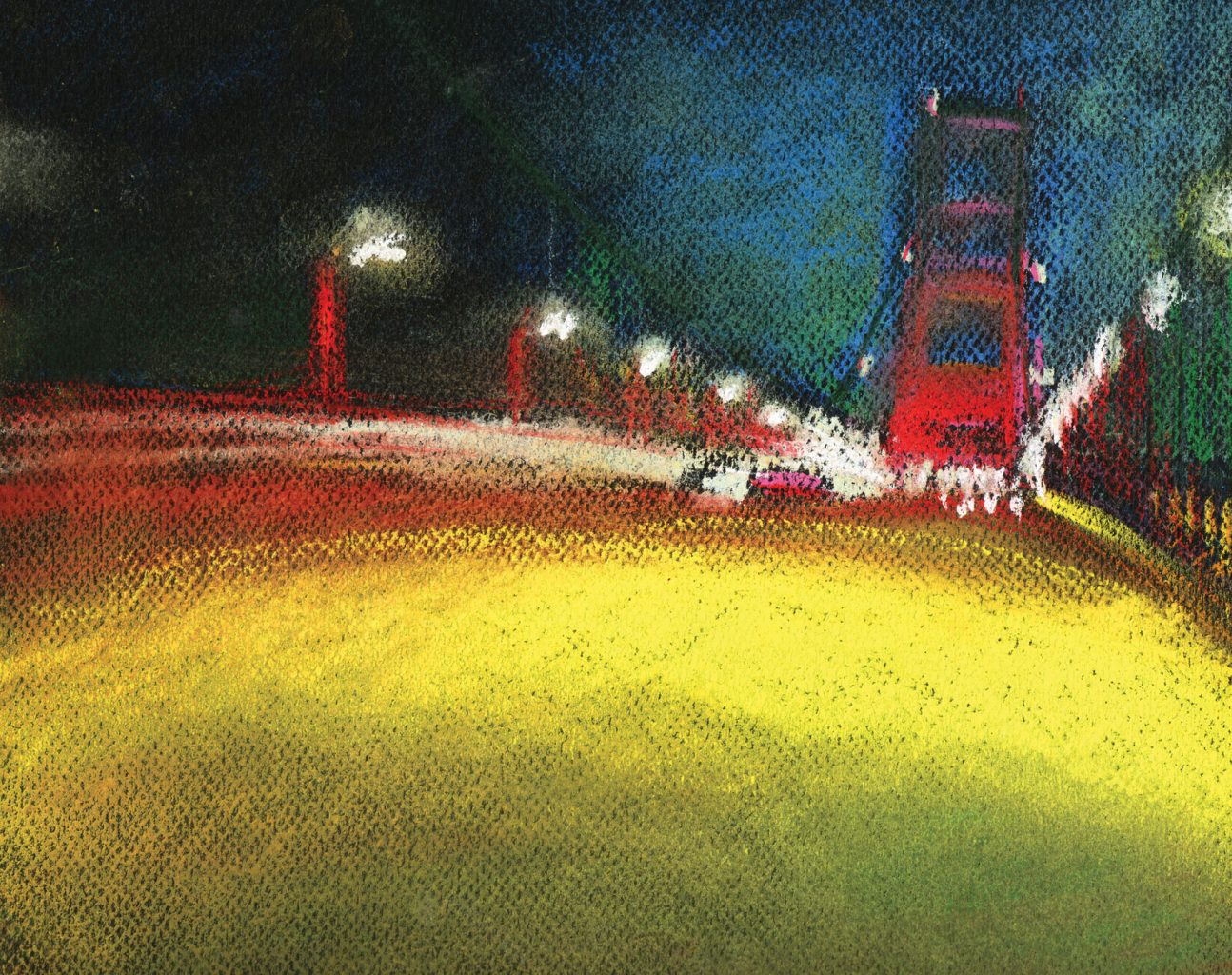How Ann Rea Makes Both Art and Money
By Jack Hamann
Ann Rea was once one of those artists. Stuck in a cubicle. Staring at a screen. Collecting modest paychecks for work entirely unrelated to the five years it took her to earn an art degree.
And hating every minute of it.
“ I had to pay back a student loan,” Rea recalls. “I had to pay a mortgage. I had to pay for adult life. Art just wasn’t a practical option.”
I had to pay back a student loan,” Rea recalls. “I had to pay a mortgage. I had to pay for adult life. Art just wasn’t a practical option.”
These days, however, Rea’s art is more than practical; it’s downright lucrative. Gone are the cubicle, screen, and static paychecks. In their place are paintings, patrons, and the joy of a career that more than pays the bills.
Except that, as Rea tells it, art is not a career. She points to the U.S. Bureau of Labor and Statistics, which in 2014 listed only 3,300 fine artists employed in the United States. “There are no jobs for fine artists,” says Rea. “If there are no jobs for fine artists, then there are no careers for them, either.
“If you want to make art and make money, then pursuing an art career is a dead-end road,” she says. “Successful artists run businesses.”
They didn’t teach business at the Cleveland Institute of Art, where Rea focused on industrial design, graduating in 1987. Art school left her with student-loan debt and the impression that artistic success depends on pursuing permission from the art establishment. For Rea, that strategy was toxic.
She grew up in what she says was an alcoholic household. A relatively brief marriage ended when her ex revealed his own drinking issues. Relentless ennui and sadness plagued her unhappy years at various desk jobs.
At the urging of a friend, Rea pulled her brushes and a canvas out of storage. “I started painting again as a way to alleviate my own anxiety and depression,” she says. “I had no intention of actually selling my work at that point or even showing it.” The more time she invested at her easel, the better she felt. The better she felt, the more her art blossomed.
“Anxiety is a preoccupation with the future, and depression is a fixation on the past. When I paint, I’m able to be 100 percent in the present,” Rea explains.
Rea had talent enough to enter the world of galleries and representatives, but that move proved a poor pairing. Looking back, she says, she felt that the art establishment had abused her in ways that felt like abuse at the hands of her family, her ex, and a lecherous former boss.
“As soon as I recognized that, I said, ‘Well, hell no. Why am I doing this? I don’t like it that I’m not getting paid. I don’t like it that people lost my art. I don’t like it that they sent it back damaged. I don’t like it that I have to wait for a show. I don’t like it that they’re asking me if they can discount my work and have me eat the discount. I don’t like that. It doesn’t work for me.’”
Rea reached a turning point. She says she “fired” the galleries she worked with, relationships she now describes as “pretty lame.” “I don’t want to work that damn hard for permission to just show my art so it might sell, and they keep half or maybe more.
“I’d much rather cultivate a relationship with a patron. Get paid up front. Not allow any discounting. Keep all of the money. And through that relationship, get repeat purchases and referrals to their friends and family. That’s a smarter way to go.”
Living near San Francisco’s Golden Gate Bridge, Rea grew increasingly confident painting landscapes bathed in the Bay Area’s hazy warm light. Rea reached out to the region’s renowned wineries, where she’d paint a permanent reminder of a memorable setting. In her first year painting vineyards, Rea earned more than $100,000—far more than she’d ever made in her office jobs.
As word of her business model spread, Rea took the next step: teaching other artists what she had learned. Rea created the website Artists Who Thrive and copyrighted the phrase “Making Art Making Money.” Her online seminars made her a minor sensation, and an interview with podcast guru Alex Blumberg introduced strangers to some of the darker chapters in her life’s journey. “Most of my closest friends had never heard those stories,” she says.
Those dark chapters, however, are central to her curriculum. First and foremost, she tells her students to find their personal purpose. “Look at the three most painful moments and three most joyful moments in your life,” she says. “Ask yourself: What was the lesson in each of those moments, and what was the lesson in all of it? That’s your purpose, because, if you look at the most painful moments in your life, they stand in stark contrast to your most deeply held values.”
For Rea, those values were financial and creative independence.
Armed with that insight, Rea tells her students, “You don’t want to sell art. Why? Because selling art sucks. You want to create value above and beyond your art and sell that.” In her case, accompanying clients to a favorite spot and creating a memory they’ll hang on their wall and cherish is added value beyond the art. Her patrons see more than art; they remember an experience.
For some, Rea’s approach is simply too commercial—a sell-out. Rea, however, insists she is selling art without selling out. “If you want to truly deliver unique value and a passionate mission that will resonate with other people, you cannot sell out. You have to absolutely stand firm in who you are and what you stand for. And know your values. And never, ever compromise.
 “When you submit to the art establishment and try and figure out [its] crazy rules, that’s more of a sell-out.”
“When you submit to the art establishment and try and figure out [its] crazy rules, that’s more of a sell-out.”
Recently, Rea’s easel time has had to take a backseat to her seminars and consulting. But at the start of 2016, she says she’s determined to bring her art back to the fore. The sudden death of two close friends has added new urgency and perspective. “Life is precious—and short,” she says.
Even so, she’s not ready to cede the bully pulpit. She recently relaunched her Making Art Making Money website with a renewed determination to free fellow artists from a wait-to-be-discovered mindset. “The new creative class of artists is leveraging the Internet to reach [its] target market and delivering a unique value proposition. That’s the type of artist I can help.
“Artists need to take their power back. It’s long overdue.”
Ann Rea’s 10 Signs You’re Approaching Your Art as a Hobby, Not a Sustainable Business
1. You’re using Etsy as your primary distribution channel.
2. You display your résumé on your website instead of communicating clear benefits to your target market.
3. You have “poverty consciousness,” and you take some pride in it.
4. You have a website versus an e-commerce site. That’s like having a store without a cash register.
5. You proudly display inventory that you’ve already sold. Think about it. Would Tiffany’s display a diamond engagement ring in the front window if it were not for sale?
6. You spend more time hoping versus planning daily focused action.
7. You do not have an up-to-date one-page business and marketing plan.
8. You do not have professional photographs of your inventory or yourself.
9. You enter art contests for validation. (Please tell me you don’t pay to enter these contests.) Selling—not showing—your art is validation.
10. You don’t have a mentor who has accomplished what you want to accomplish.
Remembering San Francisco
In 1905, Henri Matisse visited Collioure, France, near the Spanish border. His paintings of the village’s churches are among his most respected works. Other artists, including Pablo Picasso and André Derain, also found inspiration in the same small village.
More than a century later, Ann Rea visited Collioure with one of her mentors, landscape painter Gregory Kondos. She was struck by a particularly stunning view of the Chapel of St. Vincent, but her easel was unavailable. An hour later, she saw a Matisse drawing of that same scene in a museum. That vivid interpretation was the most memorable moment of her French adventure, and the memory of the chapel was stuck in her head forever.
Returning home to San Francisco, Rea considered how landscape paintings can evoke powerful memories and emotions. She has focused the idea into a new business, Remember San Francisco.
“People come from all over the world to experience San Francisco, and they get herded to the usual places,” she says. “I’ll offer an artist’s tour, perhaps three per season, where a visitor can go and experience the city from an artist’s unique perspective.”
Visitors to her new e-commerce site, RememberSanFrancisco.com, will receive geo-coordinates to her favorite, often hidden, spots. When visitors reach the venue, they’ll have a chance to use her website—and, soon, a smartphone app—to hear or watch Rea describe the site’s artistic and emotional appeal. If her customers find their own inspiration at any of the locations, they can purchase a fine-art print of that spot.
“A friend of mine had a medical condition and faced certain, imminent death,” says Rea. “When he and his wife reminisced about their many years together, they talked mostly about the places they had traveled. Travel memories are among our most powerful, and fine art of places we remember offers unique value.”



14 Comments
Amazing to read this article this morning. Thank you for the clear inspiring words!!
Wow, it’s amazing.
Thank you for a great article.
Great article that helps me stay focused.
I enjoyed your article very much. I am glad I am not the only one not being able to sell my artwork very easily. It has given me some hope for the future! I am a young sixty six year old female with plenty of energy but I help take care of my ninty one year old Mom which is hard going. Still, I make time for my art as it keeps me sane and happy, I am so glad a friend shared your article with me.
Thank you
Vivien
Excellent article with which I can totally identify with. When I was at art school back in the day, I quickly realised that if I didn’t take control of the marketing of my work, I would have to find another way to support myself.
It was a leap of faith, but I have been living from the proceeds of my art for the past 30 years!
very good comment
LOVE THIS ARTICLE. ENJOYED READING EVERY BIT AND I’M SO GLAD I CAME ACROSS IT. THANK YOU.
YOUR ART IS VERY SERENELY RIVITING. I WANT SOME.
I absolutely agree with Rea.
Thanks for This.
I stumbled across this article after I did a search on “selling my art online.” I meant I wanted to sell some art I own (or at least find out best practices for how to do it), not that I had created paintings I wanted to sell to patrons. At any rate, this was a moment of finding exactly what I needed when I needed it, without knowing I needed it.
I’m a former dancer and choreographer. What is said here doesn’t translate perfectly to what I did in the past; however, it is still a powerful lesson in understanding how to value your creative output, how to create value for an appreciative audience, and how to connect with that appreciative audience. Knowing your worth, knowing how to show others your worth, and then finding those others? That’s what they never taught us in school: Nothing whatsoever about the business of being creative. (Note: The geo-coordinates for viewing SF from an artist’s perspective is genius.)
At any rate, now I’m a personal trainer and wellness coach. I’m building my own in-home coaching service, and somehow I wasn’t sure what I’m doing to differentiate myself. I still don’t; however, there was so much in this interview that spoke to me. I don’t know yet what it said to me, but I do know I will get more from each subsequent reading. I’m going to share a link to this site with a small FaceBook group I created called Wealth and Hellness. It’s a group where I encourage people to share anything that makes their lives better (e.g. books, workouts, memes, recipes, poems, meditation strategies, investing ideas, etc.). Something is simmering in me now, and I need to share it with others.
Thanks very much. This may be an older post for you, but it’s sparkling new for me. I wanted to acknowledge that what you published here has both sentimental and practical value.
Great Story , Art is its own reward, so few make a living at it. Good job Ann , Selling your art your self is the way to go, but shunned my so many who lack the ability them self, and fall for the abusive gallery relationship.
Geoffrey Smith
Ann Rea is one of the best art advice people there is, she says it how it is and it works.
I especially love the 10 Signs You’re Approaching Your Art as a Hobby, Not a Sustainable Business
Fantastic article. Very insightful.